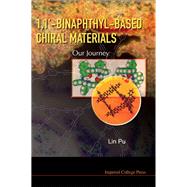
What is included with this book?
| Preface | p. v |
| Introduction About l,l'-Binaphthyls | p. 1 |
| References | p. 10 |
| Main Chain Chiral-Conjugated Polymers | p. 13 |
| Introduction About Chiral-Conjugated Polymers | p. 13 |
| Binaphthyl-Based Polyarylenevinylenes | p. 17 |
| Binaphthyl-Based Polyarylenes | p. 20 |
| Binaphthyl-Based Polyaryleneethynylenes | p. 23 |
| Binaphthyl-Thiophene Copolymers | p. 30 |
| Copolymers of BINAM and Thiophene-Containing Conjugated Linkers | p. 37 |
| Polybinaphthyls Without Conjugated Linkers | p. 39 |
| Propeller-Like Polybinaphthyls | p. 51 |
| Dipole-Oriented Propeller-Like Polymers | p. 69 |
| Binaphthyl-Based Polysalophens | p. 71 |
| Helical Ladder Polybinaphthyls | p. 76 |
| References | p. 85 |
| Polybinaphthyls in Asymmetric Catalysis | p. 87 |
| Introduction about Chiral Polymers in Asymmetric Catalysis | p. 87 |
| Synthesis of Major-Groove Poly (BINOL)s | p. 89 |
| Application of the Major-Groove Poly (BINOL)s to Catalyze the Mukaiyama Aldol Reaction | p. 95 |
| Application of the Major-Groove Poly (BINOL)s to Catalyze the Hetero-Diels-Alder Reaction | p. 99 |
| Using the Ti(IV) Complex of the Major-Groove Poly (BINOL) to Catalyze the Diethylzinc Addition to Aldehydes | p. 101 |
| Synthesis of the Minor-Groove Poly (BINOL)s | p. 102 |
| Application of the Major- and Minor-Groove Poly (BINOL)s to Catalyze the Asymmetric Organozinc Addition to Aldehydes | p. 105 |
| Asymmetric Reduction of Prochiral Ketones Catalyzed by the Chiral BINOL Monomer and Polymer Catalysts | p. 122 |
| Asymmetric Epoxidation of ¿,ß-Unsaturated Ketones Catalyzed by the Minor- and Major-Groove Poly (BINOL)s | p. 125 |
| Asymmetric Diels-Alder Reaction Catalyzed by Poly (BINOL)-B (III) Complexes | p. 133 |
| 1,3-Dipolar Cycloaddition Catalyzed by the Minor- and Major-Groove Poly (BINOL)-A1(III) Complexes | p. 136 |
| Asymmetric Michael Addition Catalyzed by the Poly (BINOL)s | p. 139 |
| Synthesis and Study of Poly (BINAP) | p. 141 |
| Synthesis and Study of a BINOL-BINAP Copolymer | p. 146 |
| References | p. 150 |
| Asymmetric Catalysis by BINOL and Its Non-polymeric Derivatives | p. 151 |
| Introduction | p. 151 |
| Asymmetric Alkyne Additions to Aldehydes | p. 151 |
| Asymmetric Arylzinc Addition to Aldehydes | p. 198 |
| Asymmetric Alkylzinc Addition to Aldehydes | p. 216 |
| Asymmetric TMSCN Addition to Aldehydes | p. 225 |
| Asymmetric Hetero-Diels-Alder Reaction | p. 233 |
| References | p. 235 |
| Enantioselective Fluorescent Sensors Based on l,l'-Binaphthyl-Derived Dendrimers, Small Molecules and Macrocycles | p. 239 |
| Introduction | p. 239 |
| Using Phenyleneethynylene-BINOL Dendrimers for the Recognition of Amino Alcohols | p. 240 |
| Using Phenylene-BINOL Dendrimers for the Recognition of Chiral Amino Alcohols | p. 246 |
| Using Functionalized BINOLs for the Recognition of Amino Alcohols and Amines | p. 252 |
| Using Acyclic Bisbinaphthyls for the Recognition of ¿-Hydroxycarboxylic Acids and Amino Acid Derivatives | p. 257 |
| Using Diphenylethylenediamine-BINOL Macrocycles for the Recognition of ¿-Hydroxycarboxylic Acids | p. 263 |
| Using Cyclohexanediamine-BINOL Macrocycles and Their Derivatives for the Recognition of ¿-Hydroxycarboxylic Acids and Amino Acid Derivatives | p. 282 |
| Application of the Cyclohexanediamine-BINOL Macrocycle Sensor in Catalyst Screening31 | p. 294 |
| Using Monobinaphthyl Compounds for the Recognition of ¿-Hydroxycarboxylic Acids and Amino Acid Derivatives | p. 299 |
| Enantioselective Precipitation and Solid-State Fluorescence Enhancement in the Recognition of ¿-Hydroxycarboxylic Acids by Using Monobinaphthyl Compounds | p. 303 |
| References | p. 308 |
| Miscellaneous Studies on Materials Related to l,l'-Binaphthyls | p. 311 |
| Chiral Molecular Wires | p. 311 |
| A Biphenol Polymer | p. 316 |
| Supramolecular Chemistry of Self-Assembly of Racemic and Optically Active Propargylic Alcohols | p. 318 |
| References | p. 331 |
| Index | p. 333 |
| Table of Contents provided by Ingram. All Rights Reserved. |
The New copy of this book will include any supplemental materials advertised. Please check the title of the book to determine if it should include any access cards, study guides, lab manuals, CDs, etc.
The Used, Rental and eBook copies of this book are not guaranteed to include any supplemental materials. Typically, only the book itself is included. This is true even if the title states it includes any access cards, study guides, lab manuals, CDs, etc.